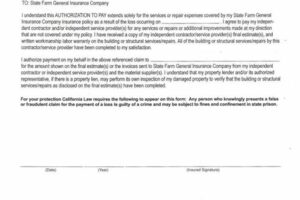Table of Contents
Learn how to identify poorly run farms in the US. Discover warning signs, such as poor animal welfare practices and environmental violations.
When it comes to supporting local agriculture, many Americans strive to make informed choices about the food they consume. However, in a vast country like the United States, it can be challenging to differentiate between good and bad farms. A closer look reveals that not all farms adhere to ethical practices or prioritize the well-being of their animals and the environment. In order to truly support sustainable farming practices and ensure the quality of the food we eat, it is crucial to be able to recognize the telltale signs of a bad farm. So, let’s delve into the world of agriculture and explore the red flags that can help us identify farms that fall short of our expectations.
Living in the United States, it’s important to be aware of where our food comes from. With the rise of factory farming and unethical agricultural practices, it’s crucial to support responsible farmers and avoid those that prioritize profit over animal welfare and environmental sustainability. But how can we recognize bad farms? In this article, we’ll explore some key indicators that can help you identify farms that may not meet ethical standards.
1. Inadequate Animal Housing and Conditions
A major red flag when it comes to identifying bad farms is inadequate animal housing and conditions. If animals are confined in small, overcrowded spaces without access to natural light or proper ventilation, it’s a clear sign of poor animal welfare standards. Look for signs of stress or illness in the animals and avoid supporting such farms.
2. Excessive Use of Antibiotics
Another indicator of a bad farm is the excessive use of antibiotics in livestock. While antibiotics are necessary at times for animal health, their overuse can lead to antibiotic resistance and pose risks to human health. Pay attention to labels or certifications that indicate responsible antibiotic use, or opt for organic and pasture-raised products.
3. Environmental Pollution
Bad farms often disregard the impact of their practices on the environment. Look for signs of environmental pollution, such as manure runoff into water sources or air pollution from excessive use of chemicals. Supporting farms that prioritize sustainable farming methods and conservation is essential for the health of our planet.
4. Lack of Transparency
If a farm lacks transparency and is unwilling to provide information about their practices, it’s a warning sign. Responsible farmers are proud of their ethical and sustainable practices and are usually open to sharing information with their customers. Ask questions and do your research to ensure you’re supporting farms that align with your values.
5. Cruelty towards Animals
Recognizing cruelty towards animals is crucial when identifying bad farms. This includes physical abuse, neglect, or engaging in practices such as dehorning or debeaking without proper anesthesia or pain relief. Choose animal products from farms that prioritize humane treatment and follow recognized animal welfare standards.
6. Excessive Use of Pesticides and Chemicals
Many bad farms rely heavily on pesticides and chemicals to maximize their yields, often at the expense of the environment and consumer health. Look for organic or pesticide-free certifications to ensure that the products you purchase are free from harmful chemicals.
7. Poor Working Conditions
Bad farms not only neglect animal welfare but also mistreat their workers. Poor working conditions, such as long hours, low wages, lack of safety measures, or exploitation, are indicators of unethical farming practices. Support farms that treat their employees fairly and provide safe working environments.
8. Lack of Pasture Access
For livestock, access to pasture is crucial for their well-being and natural behavior. If a farm fails to provide animals with sufficient access to pasture or outdoor areas, it’s a sign of poor animal welfare. Look for labels such as grass-fed or pasture-raised to ensure you’re supporting farms that prioritize providing animals with adequate outdoor space.
9. Noncompliance with Regulations
Farms that consistently fail to comply with regulations or industry standards should be avoided. These regulations are in place to protect animal welfare, the environment, and consumer health. Research local regulations and look for certifications that ensure farms are meeting the necessary requirements.
10. Negative Reputation or Reviews
Last but not least, pay attention to a farm’s reputation and reviews. If you come across negative reviews or hear concerning stories about a particular farm, it’s wise to avoid supporting it. Positive feedback and recommendations from trusted sources can help guide you towards responsible and ethical farming practices.
By being aware of these indicators, you can make informed choices when it comes to supporting responsible farms in the United States. Remember, your food choices have an impact on animal welfare, the environment, and your own health, so choose wisely and support farms that prioritize ethical and sustainable practices.
The Biting Truth: Unveiling the Dark Side of US Farms
Behind the Barn Door: Spotting Telltale Signs of Bad Farms in the US
When Pigs Squeal: Deciphering the Clues of an Unethical Farm
Don’t be Chicken! Brace yourself to Identify Sketchy US Farms
From Farm to Foul: Identifying Red Flags in American Agricultural Practices
The Dirty Harvest: Unmasking the Hidden Secrets of Unscrupulous US Farms
A Rotten Crop: Hints and Cues to Recognize Troublesome Farms in the US
Field Fables Exposed: How to Outsmart Bad Farms in the United States
Harvesting Deception: Don’t Fall for the Tricks of Unethical US Farms!
Barnyard Bandits: Navigating the Underbelly of Bad Farms in America
When we think of farms, idyllic images of rolling green fields, content animals, and hard-working farmers often come to mind. However, beneath this picturesque facade lies a dark side that many are unaware of. The reality is that not all farms in the United States adhere to ethical practices and prioritize the well-being of their animals. In this article, we will explore the various ways to recognize bad farms in the US, shedding light on the hidden secrets and red flags that indicate unethical agricultural practices.
One of the first steps in identifying problematic farms is to pay attention to the treatment of animals. Animals on good farms are usually healthy, well-fed, and have access to clean water, shelter, and ample space to move around. On the other hand, animals on bad farms may appear malnourished, dirty, and cramped in overcrowded spaces. Look out for telltale signs such as signs of neglect, injuries, or signs of abuse like visible scars or wounds.
Another clue that can help you identify sketchy farms is the use of antibiotics and hormones. While these substances are commonly used in the agricultural industry to promote growth and prevent diseases, their excessive and indiscriminate use can have detrimental effects on animal welfare and human health. If a farm heavily relies on antibiotics and hormones, it could be an indication of poor farm management and disregard for the long-term consequences of such practices.
In addition to the treatment of animals and the use of chemicals, it is essential to consider the environmental impact of farms. Ethical and sustainable farms prioritize conservation efforts, minimizing pollution, and implementing responsible waste management practices. On the contrary, bad farms often contribute to environmental degradation through the release of harmful pollutants into water bodies, soil erosion, and excessive use of pesticides and fertilizers. Keep an eye out for signs of pollution, such as foul odors, discolored water, or dead fish in nearby streams or rivers.
Furthermore, the labor conditions on farms can be a significant indicator of their ethical standards. Good farms provide fair wages, safe working conditions, and adhere to labor laws. However, bad farms may exploit their workers, subjecting them to long hours, low pay, and hazardous working environments. If you notice signs of mistreatment or exploitation, such as overcrowded worker accommodations, unsafe machinery, or reports of labor violations, it is a clear sign that the farm may not prioritize the well-being of its employees.
When it comes to recognizing bad farms, it is also crucial to consider their transparency and willingness to engage with the public. Ethical farms are usually open to visitors, provide information about their farming practices, and allow customers to see how their food is produced. Conversely, bad farms may be secretive, restrict access to their facilities, and avoid answering questions about their practices. If a farm is reluctant to share information or seems evasive when asked about their operations, it is a potential red flag.
Another aspect to consider is the overall reputation of the farm. Good farms often have positive reviews, testimonials, and endorsements from customers, animal welfare organizations, or industry experts. On the other hand, bad farms may have a history of complaints, regulatory violations, or negative media coverage. Do your research and look for any indications of a farm’s reputation before supporting them.
Lastly, it is essential to trust your instincts and listen to your gut feeling when assessing a farm’s ethics. If something feels off or doesn’t align with your values, it is worth investigating further or seeking alternatives. Your consumer choices have the power to shape the agricultural industry, so it is crucial to support farms that prioritize ethical practices and the well-being of animals, the environment, and workers.
In conclusion, recognizing bad farms in the United States requires attention to various factors such as animal treatment, use of chemicals, environmental impact, labor conditions, transparency, reputation, and personal intuition. By being aware of these red flags and choosing to support ethical farms, we can contribute to a more sustainable and compassionate agricultural system. So, don’t be chicken! Arm yourself with knowledge and navigate the underbelly of bad farms in America to ensure a better future for all.
Once upon a time, in the vast and diverse land of the United States, there were farms scattered across the countryside. These farms were not all created equal, as some were well-maintained and operated with utmost care, while others were far from being ideal. In this story, we will embark on a journey to explore how one can recognize the signs of bad farms in the United States.
1. Appearance: The first clue to identifying a bad farm lies in its appearance. As you approach, take note of the overall condition of the farm. Are the buildings dilapidated and falling apart? Is the surrounding land unkempt and littered with debris? A poorly maintained farm is often an indication of neglect and lack of attention to detail.
2. Animal Welfare: As you venture closer to the animals, observe their living conditions. Are they kept in cramped and unsanitary enclosures? Do they seem malnourished or injured? A bad farm may show signs of neglect towards its livestock, failing to provide them with proper care, space, and nutrition.
3. Environmental Practices: Pay attention to how the farm interacts with its surroundings. Does it use harmful pesticides or chemicals that could harm the environment? Is there evidence of pollution in nearby water sources? A bad farm often disregards sustainable practices and has little regard for the impact it has on the ecosystem.
4. Worker Treatment: Take note of how the farm treats its workers. Are they provided with fair wages and appropriate working conditions? Are there any signs of exploitation or mistreatment? A bad farm may have a history of labor violations and disregard for the well-being of its employees.
5. Transparency: An important aspect of recognizing bad farms is their level of transparency. Are they open to visitors and willing to answer questions about their practices? Do they shy away from sharing information or seem evasive? A lack of transparency can be a red flag, indicating that the farm may have something to hide.
As we conclude our journey through the United States’ farms, it is important to remember that not all farms are created equal. By keeping an eye out for these signs, we can make informed choices about the food we consume and support farms that prioritize the well-being of their animals, workers, and the environment. Let us strive for a future where only the best farms thrive, ensuring a sustainable and ethical agricultural industry.
Dear blog visitors,
As we come to the end of this article, I hope you have found the information provided on how to recognize bad farms in the United States both enlightening and thought-provoking. It is crucial for us as responsible consumers to be aware of the potential issues surrounding industrial farming practices and take steps towards supporting ethical and sustainable alternatives.
Firstly, it is important to pay attention to the living conditions of the animals on the farm. When visiting a farm or researching online, look out for signs of overcrowding, unsanitary conditions, and the absence of proper shelter. Animals should have access to clean water, sufficient space to move around, and appropriate bedding or flooring. If you spot animals that appear sickly, injured, or show signs of mistreatment, it is a clear indication of a bad farm.
Another aspect to consider is the use of chemicals and antibiotics in farming practices. Many industrial farms rely heavily on the use of pesticides, herbicides, and growth hormones, which can have detrimental effects on the environment and our health when consumed. Sustainable farms prioritize organic and regenerative farming methods, avoiding the use of harmful chemicals. Look for farms that are certified organic or those that follow similar principles, such as using natural pest control methods and rotating crops to maintain soil fertility.
Furthermore, transparency and accountability are key indicators of a good farm. Responsible farmers are typically open to sharing information about their practices, including how they raise their animals, what they feed them, and how they handle waste. On the other hand, bad farms often try to hide or avoid questions regarding their farming methods. Look for farms that provide clear information on their websites, offer farm tours or visits, and engage with their customers through communication channels like social media or newsletters.
In conclusion, being able to recognize bad farms is a crucial step towards making informed choices as consumers. By supporting ethical and sustainable farming practices, we not only contribute to the well-being of animals but also help protect our environment and promote healthier food options for ourselves. Remember to always be vigilant, ask questions, and support local farmers who prioritize the welfare of their animals and the sustainability of their operations.
Thank you for joining us on this journey of awareness and empowerment. Together, we can make a difference in shaping the future of farming in the United States.
Best regards,
The Blog Team
.
People also ask about how to recognize bad farms in the United States:
- What are some signs of a bad farm?
- Foul odors emanating from the farm: A strong and unpleasant smell may indicate poor waste management or unhealthy living conditions for animals.
- Visible signs of neglect: If the animals appear malnourished, injured, or are living in dirty and overcrowded spaces, it could be a red flag.
- Lack of transparency: Farms that are unwilling to provide information about their farming practices, animal welfare standards, or refuse farm visits might be hiding something.
- Environmental damage: Farms that disregard environmental regulations, such as improper disposal of waste or pollution, can be considered bad farms.
- How can I ensure the farm I support is ethical?
- Research the farm’s reputation: Look for reviews, testimonials, or news articles that shed light on the farm’s practices and reputation.
- Visit the farm if possible: Seeing the conditions firsthand allows you to assess the farm’s cleanliness, animal welfare standards, and overall ethics.
- Choose certified farms: Look for certifications like Certified Humane or Organic which indicate adherence to certain standards and regulations.
- Support local and sustainable farms: By buying directly from local farmers who prioritize sustainability and animal welfare, you can be more confident in their practices.
- What are the consequences of supporting bad farms?
- Animal cruelty: Bad farms often subject animals to inhumane living conditions, neglect, or excessive use of antibiotics and growth hormones.
- Environmental damage: Farms that disregard environmental regulations contribute to pollution, soil degradation, and water contamination.
- Health risks: Poor farming practices can result in contaminated food products, increasing the risk of foodborne illnesses.
- Diminished local economy: By supporting bad farms, you may be undermining local farmers who prioritize ethical and sustainable practices, leading to economic disparities.
Recognizing a bad farm can be challenging, but there are a few signs to look out for:
To ensure you are supporting an ethical farm, consider the following:
Supporting bad farms can have several negative consequences:






